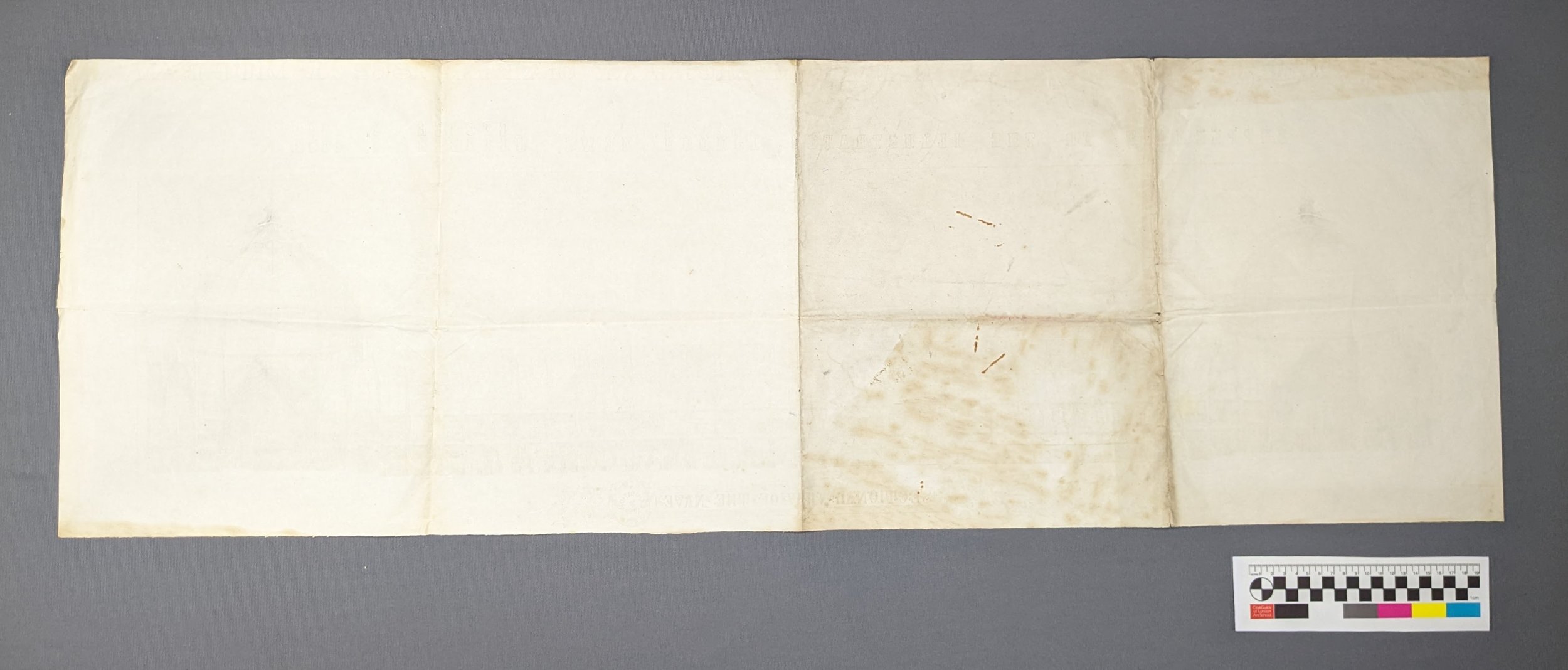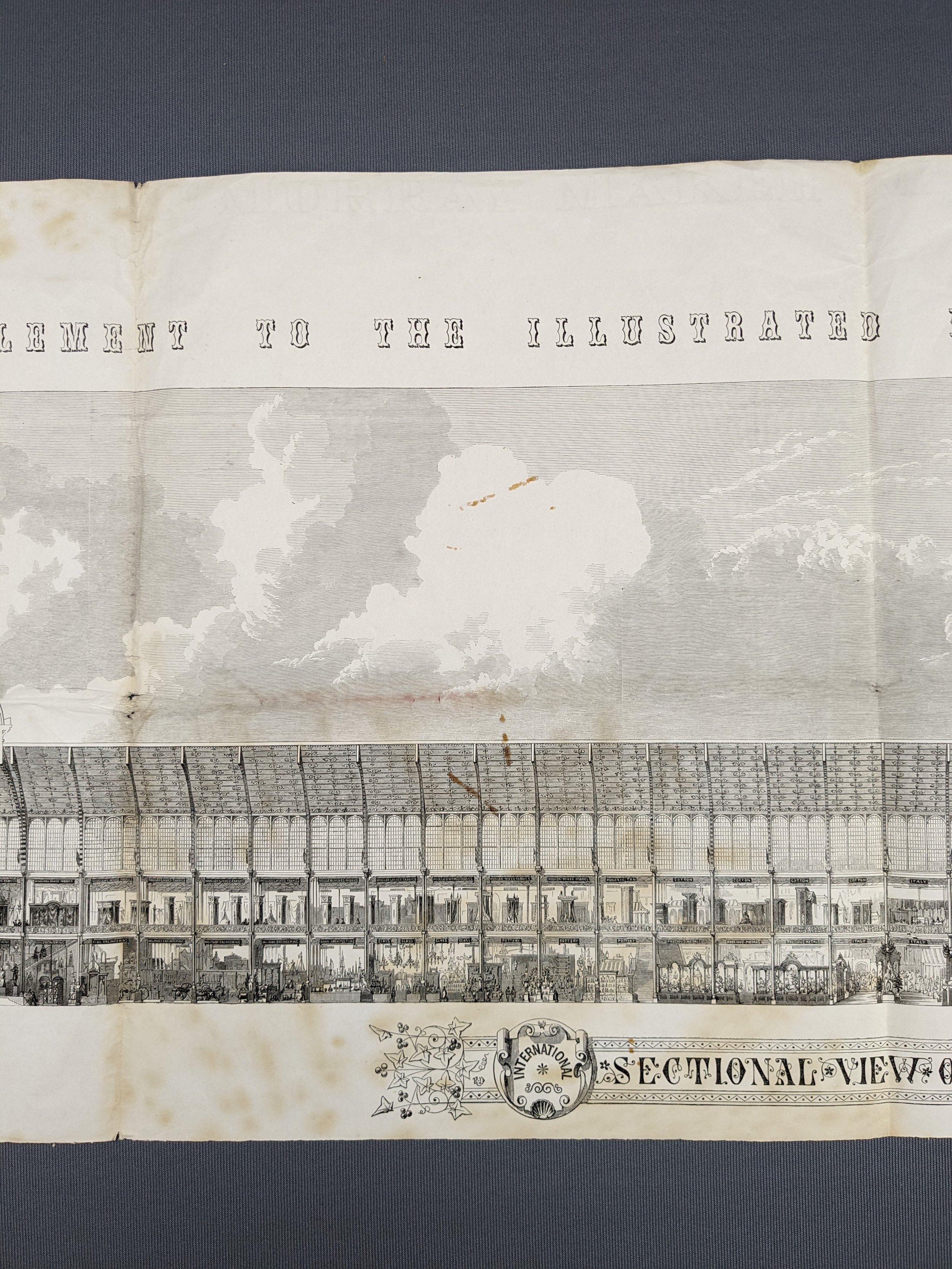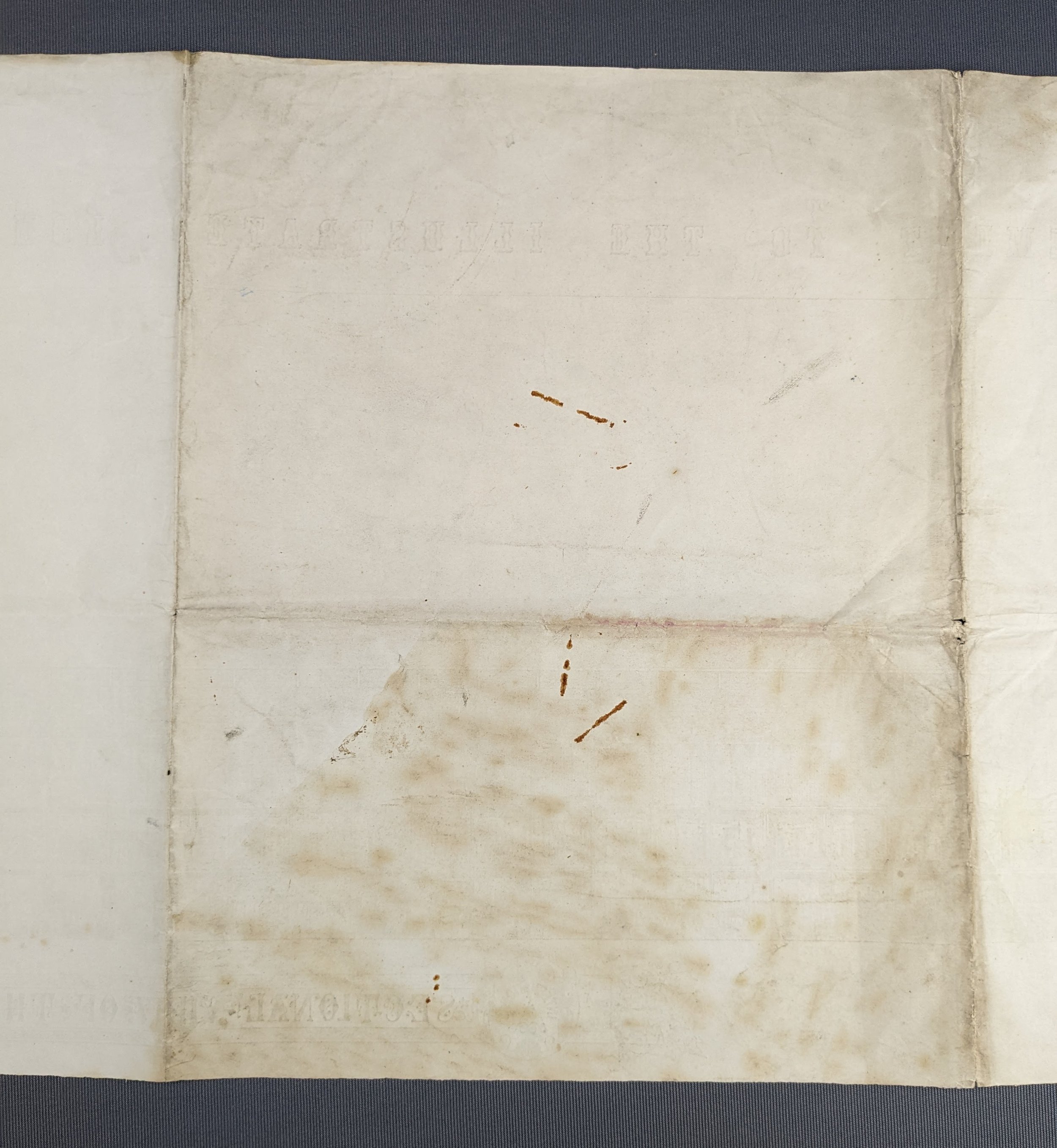1862 Engraving of the Great London Exposition at Crystal Palace
This work was carried out for a private client and is shared with permission.
Brief Description
Landscape-oriented engraving showing the sectional view of the crystal palace of the Great London Exposition in 1862. The image is framed in the centre of the print, with inscriptions above and below.
The engraving is a supplement to the October 4th, 1862 issue of the London Illustrated News, a weekly news magazine covering the Great London Exposition at South Kensington.
Brief Condition Assessment
Deep creasing, staining, and discolouration
Irregular stain pattern, possibly water damage or foxing, likely transferred from touching another object as the staining lines are quite sharp, in contrast to a more organic line typically formed by tidelines
Prominent iron stains
Various small to medium tears around the edges of the paper and areas of loss along the fold lines
Brief Treatment Description
Surface Cleaning
The surface of the paper were brushed using a gentle goat-hair bristle brush to remove loose dirt, followed-up with a chemical sponge to remove ingrained dirt from the paper fibres.
Deacidification
The print was gently humidified prior to being gently placed in a warm bath prepared in an oversized sink. Tap water was used at a pH of 7.5. This process was repeated twice to remove as much discolouration as possible.
Stain Removal using Chelation and a Reducing Agent
The oversized sink was filled with hot water, then covered with a large sheet of perspex to control the reduction in temperature. A separate solution was prepared in a beaker using hot water, EDTA, and Thiourea Dioxide to make a 3% solution. Once thoroughly mixed and dissolved, it was added to the hot bath once it reached about 50 degree celsius.
The bath was checked every 30 minutes to ensure the temperature does not fall below 40 degree celsius to maintain the efficacy of the chelating agent.
At this time, the iron stains were very visibly reduced. After 2 hours in the bath, the print was taken out of solution and placed in a final rinse bath to remove any active residues, then left to dry overnight.
The following morning, all traces of the iron staining had been completely removed.
Tear Repairs
All edge tears were repaired using 15 gsm Japanese paper. Losses were infilled using 28 gsm Japanese paper. All repairs were done using wheat starch paste.
Retouching
Minimal retouching was done to the red mark, which had been greatly reduced in the chelation immersion. Retouching was done using a cream chalk pencil to further reduce the intensity of the red colour.
After all repairs were done, the print was humidified and pressed. Once the print had been pressed, it was placed in a custom-made melinex sleeve and rolled for safe handling upon return.
Before & After Photos













